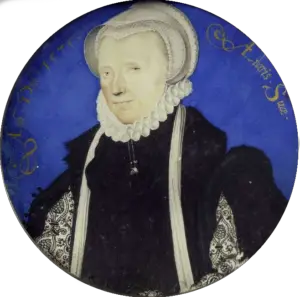 On this day in Tudor history, 19th February 1567, while imprisoned in the Tower of London, Lady Margaret Douglas, Countess of Lennox, received devastating news - her son, Henry Stuart, Lord Darnley, King of Scotland, had been brutally murdered at Kirk o’ Field in Edinburgh.
On this day in Tudor history, 19th February 1567, while imprisoned in the Tower of London, Lady Margaret Douglas, Countess of Lennox, received devastating news - her son, Henry Stuart, Lord Darnley, King of Scotland, had been brutally murdered at Kirk o’ Field in Edinburgh.
But this wasn’t just the loss of a son, it was the destruction of her dynastic ambitions, the shattering of her hopes for the future, and yet another chapter of heartbreak in Margaret’s turbulent life.
So, who was Margaret Douglas, why was she in the Tower, and what did this moment mean for her—and for the tangled web of Tudor and Stuart politics?
Margaret Douglas was no ordinary noblewoman, she was a granddaughter of Henry VII, and the daughter of Margaret Tudor (Henry VIII’s sister) and her second husband, Archibald Douglas, 6th Earl of Angus. This made her a first cousin to Edward VI, Mary I and Elizabeth I, and a serious contender for the English throne in the eyes of many.
But Margaret’s life was marked by ambition, political intrigue, and imprisonment. She had already been in the Tower twice before—for secret romances with two Howard men, Lords Thomas Howard and Charles Howard. Now, she was back in the Tower because of her son’s marriage to Mary, Queen of Scots, a union Queen Elizabeth had not approved of.
When Elizabeth I learned of Darnley’s secret marriage to Mary in 1565, she was furious. Margaret had been involved in the match, pushing for the union that could strengthen her family’s claim to the English throne. As punishment, Elizabeth had her thrown into the Tower.Then, on 10th February 1567, Darnley was found dead, strangled in a garden beside the ruins of Kirk o’ Field, after an explosion destroyed the house he had been staying in. Suspicion immediately fell on Mary, Queen of Scots, and her close associate James Hepburn, Earl of Bothwell, a man she would soon marry.
But Margaret, locked away in the Tower, knew nothing of this until 19th February, when Elizabeth sent two trusted women—Mildred Cecil (wife of William Cecil) and Lady William Howard—to break the terrible news.
The Spanish ambassador wrote that Margaret’s grief was overwhelming, and that she became physically ill from the shock. The news was so devastating that Elizabeth had to send the Dean of Westminster and a royal physician, Dr Huick, to Margaret, to calm her down.
To make matters worse, Margaret was initially told that her husband, the Earl of Lennox, had also been murdered, a false report that only added to her despair. William Cecil recorded that:
“The Queen's Majesty sent yesterday my Lady Howard and my wife to Lady Lennox in the Tower to open this matter unto her; who could not by any means be kept from such passion of mind as the horribleness of the fact did require.”
It was not long before the grieving countess was released from the Tower to Sheen, while her husband, Lennox, stayed on in Scotland trying to bring the Earl of Bothwell to justice. Sadly, for Lennox and Margaret, Bothwell was acquitted. Lennox came back to England, joining his wife at Sheen before they moved to Coldharbour, a property given to them by Elizabeth I.
Margaret’s grief over Darnley’s murder fuelled her relentless pursuit of justice, and she spent the following years demanding retribution for her son’s death. Her campaign against Mary, Queen of Scots, played a key role in turning both English and Scottish opinion against the Scottish queen. But tragedy would strike Margaret again.
On 4th September 1571, her husband, Matthew Stewart, Earl of Lennox, was shot and killed at Stirling Castle while serving as Regent of Scotland for their grandson, James VI. With both her husband and eldest son lost to political violence, Margaret’s dynastic ambitions now rested on her only surviving child, Charles Stuart.In 1574, Margaret was allowed to visit Scotland, accompanied by Charles. On the way, Charles met and fell in love with Elizabeth Cavendish, daughter of Bess of Hardwick, one of the most formidable women of the Tudor era. The young couple quickly married, and in 1575, they welcomed a daughter, Arabella, or Arbella, Stuart, a child who would one day have a strong claim to the English throne.
But Margaret’s dynastic moves once again angered Elizabeth I. The queen had not approved the marriage, fearing that any children the couple had would become another rallying point for Catholic supporters of Mary, Queen of Scots. Furious, Elizabeth had both Bess of Hardwick and Margaret thrown into the Tower of London.
Margaret was released in autumn 1574 and went to live with Charles and Elizabeth in Stepney, enjoying time with her young granddaughter. But heartbreak was never far from Margaret’s life—in 1576, Charles died of tuberculosis, devastating his mother.
Just two years later, on 9th March 1578, Margaret Douglas herself fell ill after attending a dinner party hosted by Robert Dudley, Earl of Leicester. She died soon after, marking the end of a life filled with ambition, loss, and relentless political manoeuvring. She was laid to rest in Westminster Abbey, in the Henry VII Chapel, a fitting burial for a woman of royal blood who had fought so hard to secure her family’s place in history.
Margaret Douglas’s life was one of great ambition, imprisonment, and heartbreaking loss. She suffered the murders of her husband and eldest son, endured multiple stints in the Tower of London, and saw her political aspirations repeatedly thwarted. Yet, despite everything, her bloodline triumphed.
Although she did not live to see her grandson, James VI of Scotland, inherit the English throne as James I in 1603, it was her lineage that ultimately united the crowns of England and Scotland.
Margaret Douglas may have died without a throne of her own, but she left behind a legacy that shaped the future of Britain. The modern British royal family descends directly from her—making her one of the most pivotal, yet often overlooked, figures in Tudor and Stuart history.

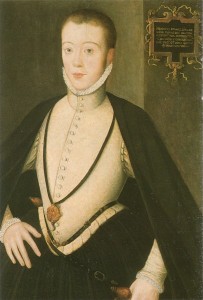
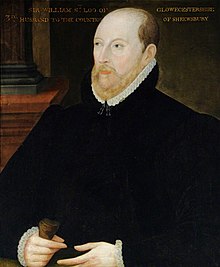
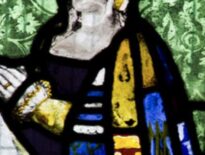
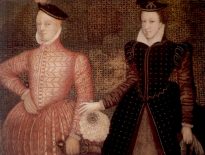
Leave a Reply